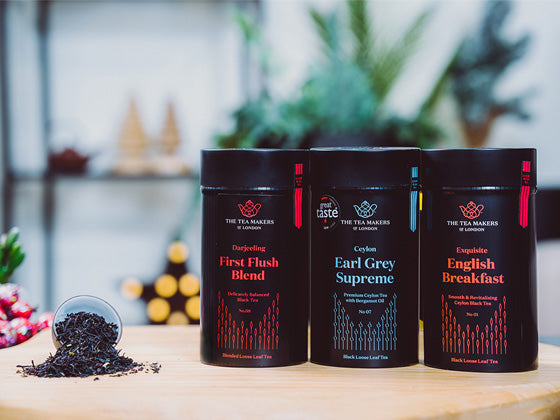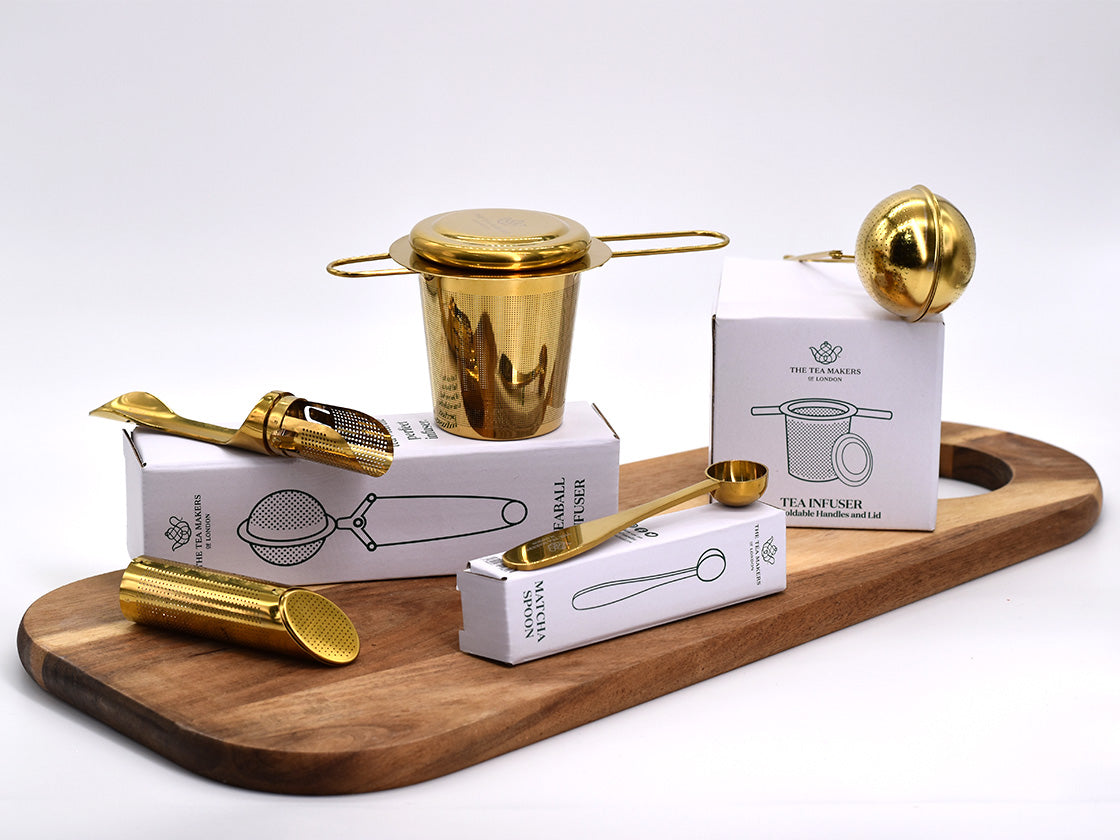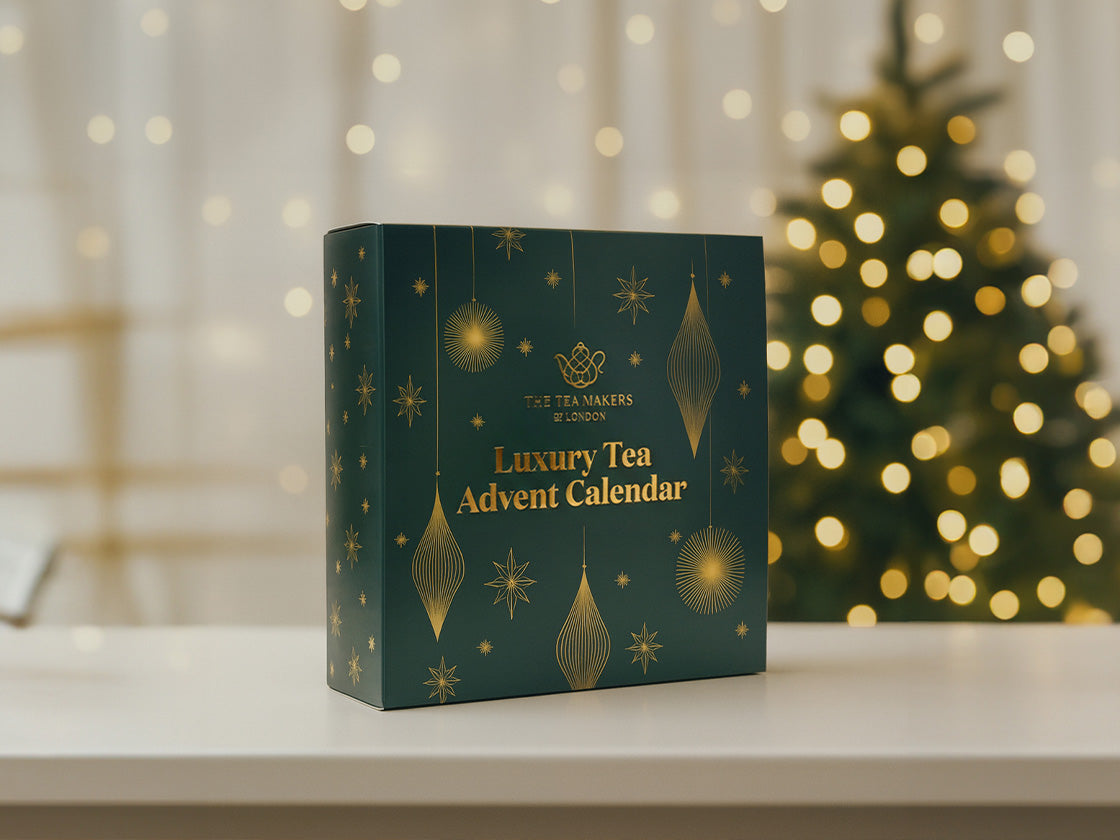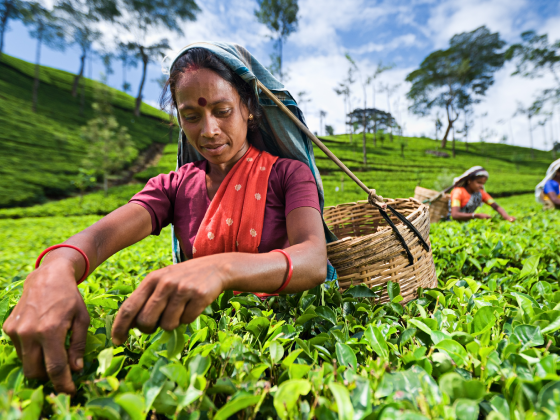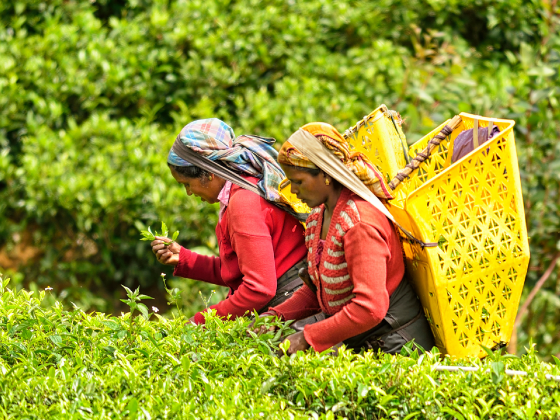Earl Grey tea is a British black tea blend. Its origin represents a pivotal tipping point in the history of tea in Britain. Earl Grey is arguably the most well-loved tea in the world. The famous tea is traditionally made by infusing a black tea blend with bergamot oil. However, its popularity has resulted in an array of varieties and interpretations.
There are many apocryphal tales about the origin of Earl Grey tea. Each of these grandiose stories involves the famous British Prime Minister, the Second Earl of Grey, Charles Grey. Charles Grey is said to have been gifted a black tea blend, infused with bergamot oil, by the Chinese. However, there is little evidence of this occurrence and many clues point in an entirely different direction. More on this below.
Some experts argue that essential citrus oils were originally used to mask the bitterness of low-quality black tea blends. Albeit a less glamorous story - based on our research into the matter - this seems to be a likely explanation for the origin of Earl Grey tea.
With this in mind, we begin by exploring the present-day flavours and varieties of Earl Grey tea.
How to Distinguish a Quality Earl Grey Tea
Finding the very best Earl Grey tea is like searching for a needle in a hay stack. With so many versions out there, choosing the perfect Earl Grey for your palate can be a time consuming and costly process. To help you on your quest to finding the best Earl Grey tea, we have created this guide to Earl Grey and outlined some tips that will help you on your way.
What constitutes Earl Grey
Earl Grey tea traditionally consists of a black tea blend, which has been flavoured with the essential oil of bergamot fruit. Bergamot Orange is a fragrant citrus fruit, the production of which is mainly limited to coastal areas in the Italian province of Reggio di Calabria.
Black tea is made from a cultivar of the traditional tea plant, Camellia Sinensis. Arguably, the best black tea varieties are produced in the Assam and Darjeeling regions of India and on the island of Ceylon (Sri Lanka).
Earl Grey tea is most commonly made from a blend of Ceylon teas or Ceylon tea blend with Assam tea. However, because of growing demands in the contemporary market, you will find Earl Greys made from a blend of teas produced in a variety of different countries around the world. We recommend that you look at the country of origin before purchasing an Earl Grey. If the tea is produced in Ceylon, Assam or Darjeeling, this could be an indication of higher quality. However, regardless of origin, the quality of the brew is ultimately determined by the quality of the tea leaves.
To create an Earl Grey, several single-origin teas are mixed together into a blend. Blending must be done with great care, to ensure that the teas complement each other and result in a superior and more complex flavour experience. The blended tealeaves are then infused with bergamot oil and - in some instances - mixed with corn flowers.
The flavours of Earl Grey
There is no definitive recipe for Earl Grey tea. It is left to the discretion of the individual blender to develop their own distinctive Earl Grey blend. Therefore, it is impossible to distinguish what constitutes the perfect Earl grey tea. This really is a question of individual taste.
Regardless of personal preference, tea-lovers always associate Earl Grey with the characteristic flavour and aroma of bergamot oil. However, the taste of Earl Grey tea varies widely from merchant to merchant. Some - often larger - brands will use bergamot oil to mask the inferior flavour of low-quality black tea blends. This often results in a bitter and perfumed taste which can be rather unpleasant.
In the production of the best Earl Grey teas, bergamot oil is merely used to enhance the balanced flavour nuances of the very finest black tea blends.
Earl Grey Varieties
There are many modern interpretations of Earl Grey tea. Varieties include Mary Grey, Russian Earl Grey and French Earl Grey. Some tea makers even label green, white and rooibos teas - that have been scented with bergamot oil - as Earl Grey varieties.
Our Earl Grey Tea Varieties
|
|
Famous Earl Grey Varieties
| Classic Earl Grey | Mary Grey | Russian Earl Grey | French Earl Grey |
| Black tea blend infused with bergamot oil. | Black tea blend infused with bergamot and other citrus oils and mixed with cornflowers. | Black tea blend infused with bergamot oil and mixed with lemongrass. | Black tea blend infused with bergamot oil and mixed with rose petals. |
The History of Earl Grey Tea
The history of Earl Grey tea is shrouded in mystery and speculations. As mentioned above, Earl Grey tea takes its name from the Second Earl of Grey, Charles Grey. Charles Grey was an important figure in British history - and in the history of tea consumption in Britain. Several British tea companies claim to have invented the recipe for Earl Grey tea as a gift or tribute to the Prime Minster.
The Second Earl of Grey, Charles Grey
Charles Grey, the second Earl of Grey, was Prime Minister of England from 1830 to 1834. During his term, he oversaw four years of political reform. His time in office had a tremendous impact on the development of democracy in Britain.
In 1833, Grey passed an act to abolish slavery and restrict the employment of children within the British Empire. This was a pivotal achievement. However, his most remarkable accomplishment was the Reform Act of 1832. The Reform Act sparked a gradual change in the British electoral process and was the stepping stone for the system we know today.
As impressive as these acts are, they do not explain his connection with tea.
Tales of Earl Grey Tea
One apocryphal story suggests that a bergamot infused black tea was gifted to the Earl Grey by a Chinese tea maker. Legend has it that the Earl’s men, who were stationed in China, saved the tea maker’s son from drowning. To show his gratitude, the Chinese man created a blend of black teas to gift the Earl. Allegedly, he added the bergamot oil to combat the taste of minerals in the water in the Earl’s Northumberland home.
Another tale states that bergamot oil was infused into a shipment of tea by accident. Tea and bergamot fruits were, according to the story, placed in close proximity to each other on a ship sailing from China to England. The accidental infusion was found to be pleasurable and a new tea was invented.
There is little to no evidence to support these tales, which - in retrospect - both seem improbable.
World Tea News points to a 2012 study by the Oxford English Dictionary (OED). They state that the researchers from OED, found references from 1824 of black tea which was flavoured with Italian bergamot oil. It is believed, that - at the time - bergamot oil was used to mask the flavours of low-quality teas. Due to this, the OED concluded that it was highly unlikely that the Earl would have championed the tea.
The History of Tea Trade in Britain
While it remains unknown why the bergamot infused black tea blend was named after the famous British Prime Minister, there is one more piece of the puzzle that may shed a little more light on the origin of the name ‘Earl Grey Tea’.
During the 17th, 18th and early 19th Centuries, one company monopolised several goods trades from China and the Indian subcontinent - the East India Company. The East India Company was a joint-stock company that traded mainly in basic commodities such as silk, salt, cotton, opium and tea. With its roots dating back to the beginning of the 17th Century, the Company rose to account for half of the world’s total trade.
The Company held its monopoly over trade between Britain and China until 1833 - during Charles Grey’s seat as Prime Minister. The Company’s monopolies ended through the parliamentary acts of 1813 and 1833. The 1833 Saint Helena Act terminated the activities of the East India Company as a commercial body - and, pivotally, allowed for other British companies to trade with China.
The end of the monopoly resulted in new trade routes, which reduced the import-cost of tea. As a result, there was a fall in prices, which caused a surge in the consumption of tea in Britain.
Unfortunately, this is where the documented connection between tea and the Earl Grey ends. One can only speculate, that there may be a connection between the surge in tea consumption at the time, and the naming of Earl Grey tea.
